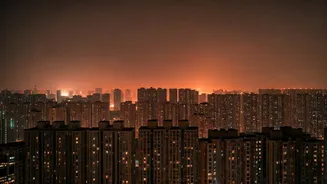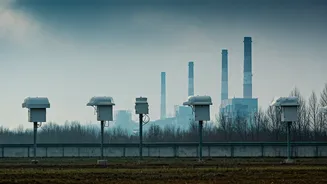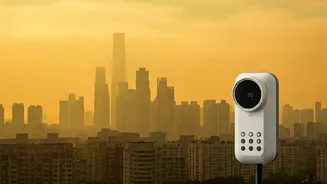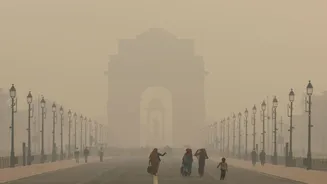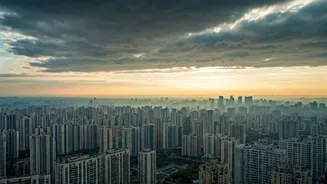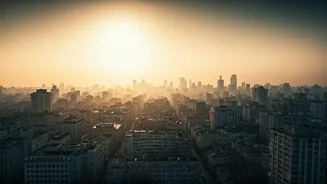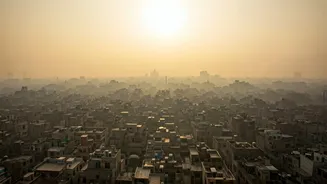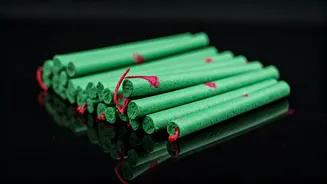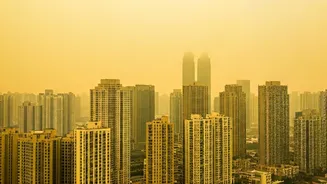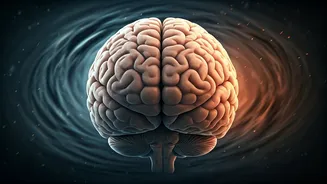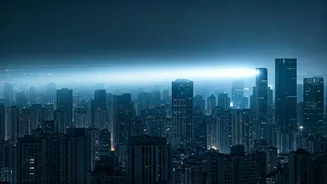Diwali's Environmental Fallout
The aftermath of Diwali brought a stark reality to Delhi: a significant decline in air quality. The celebratory use of fireworks, a long-standing tradition
during the festival, was a primary culprit. As firecrackers were set off, they released substantial amounts of pollutants into the atmosphere. This led to a visible haze that enveloped the city, diminishing visibility and raising health concerns among the population. The concentration of particulate matter, such as PM2.5 and PM10, increased dramatically, surpassing safe levels in numerous localities. This rise in pollutants was compounded by other factors, including vehicular emissions and industrial activity, creating a perfect storm for hazardous air conditions across Delhi. The immediate effect of the pollution was felt by all residents, making outdoor activities risky and necessitating protective measures to mitigate exposure to the harmful air.
Red Zone Across Delhi
The deterioration in air quality led to the declaration of several areas in Delhi as being in the 'red zone,' indicating severe levels of pollution. This classification was based on the Air Quality Index (AQI), which measures different pollutants to provide an overall assessment of air quality. Locations within the red zone experienced AQI values that were far above the permissible limits set by environmental standards. Such high pollution levels posed substantial health risks, especially to vulnerable groups such as children, the elderly, and individuals with respiratory ailments. Public health advisories urged residents to stay indoors, use air purifiers if available, and avoid strenuous outdoor activities. The extent of the red zone highlighted the widespread impact of Diwali celebrations on the city's air quality, raising public awareness regarding the urgent need for measures to combat air pollution and safeguard public health during future festive periods.
Key Factors Contributing
Several key factors contributed to the sharp decline in Delhi's air quality post-Diwali. Fireworks were undoubtedly the most significant contributor, with the combustion of firecrackers releasing massive quantities of particulate matter, sulfur dioxide, and nitrogen oxides. The emissions from vehicles, particularly during the festive season when traffic volume increased, played a crucial role in increasing the levels of pollutants in the air. Industrial activities, though usually regulated, also added to the overall pollution, especially in certain regions. Meteorological conditions, such as the inversion layer that traps pollutants close to the ground, further exacerbated the situation. The convergence of all these factors created a hazardous environment, prompting environmental agencies to implement immediate measures. This included issuing alerts and advising precautionary measures to mitigate the public's exposure to the harmful air, along with long-term efforts aimed at reducing pollution.
Impact on Public Health
The decline in Delhi's air quality directly impacted public health, causing a range of adverse effects. Exposure to high levels of pollutants can lead to both short-term and long-term health complications. Irritation in the eyes, throat, and nose became a common experience for many Delhi residents immediately following Diwali. Those with pre-existing respiratory problems, such as asthma and bronchitis, experienced exacerbated symptoms, leading to increased hospital admissions. Prolonged exposure to poor air quality can elevate the risk of developing respiratory illnesses, cardiovascular diseases, and other serious health issues. The pollution also poses serious risks to children and pregnant women, who are more susceptible to adverse effects. Consequently, public health officials stressed the importance of taking preventive measures such as wearing masks, minimizing outdoor exposure, and maintaining a healthy lifestyle to mitigate the negative health consequences linked to the toxic air.
Moving Forward: Solutions
Addressing the problem of air pollution requires a multi-pronged approach involving various stakeholders. A pivotal step is to regulate and reduce the use of fireworks, which is a major source of pollutants during Diwali. Promoting cleaner modes of transportation, such as electric vehicles, and improving public transport infrastructure can reduce vehicular emissions. Implementing stricter regulations on industrial activities, including the adoption of cleaner technologies, is essential to control pollution levels. Encouraging the use of renewable energy sources can contribute to sustainable development and lower overall emissions. In the longer term, raising public awareness about air pollution, its causes, and effects, and educating the population on sustainable practices is crucial. Government interventions, coupled with community participation, are indispensable for developing an effective strategy to improve air quality and protect the health and well-being of Delhi residents.
